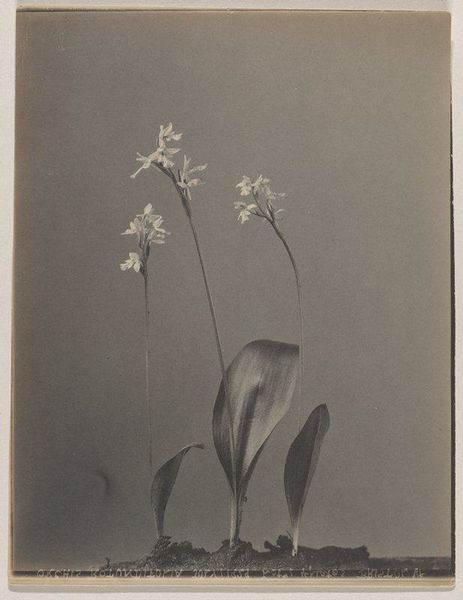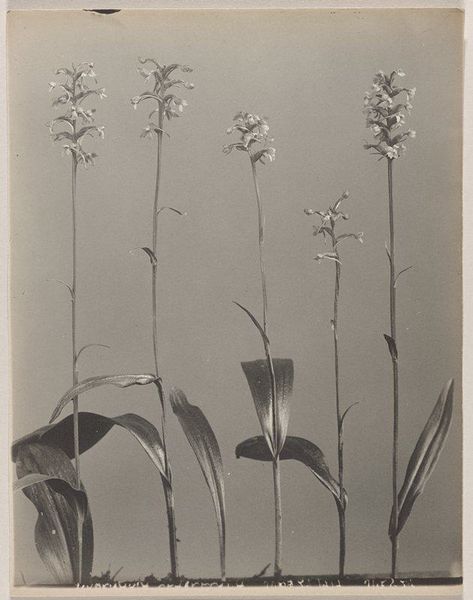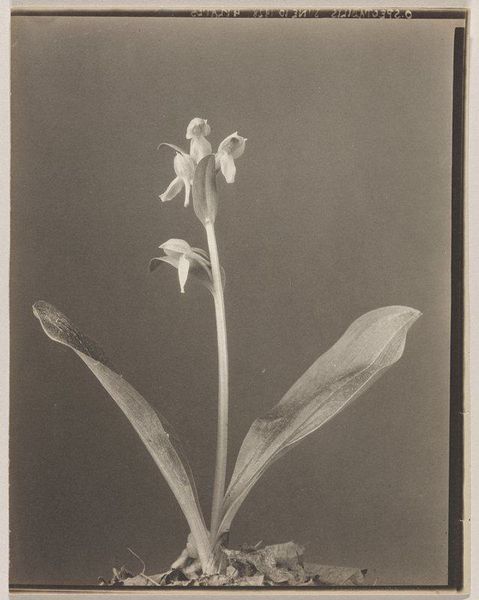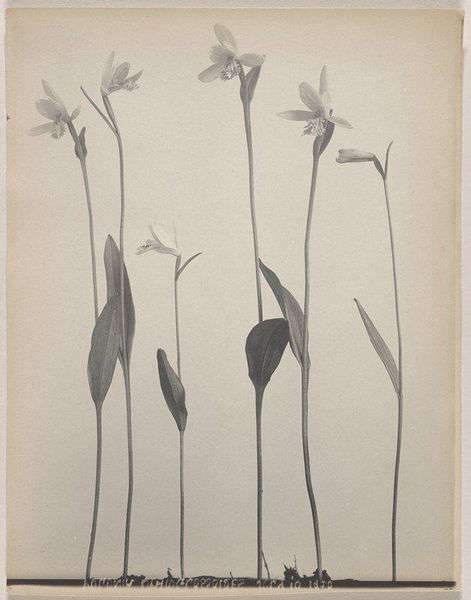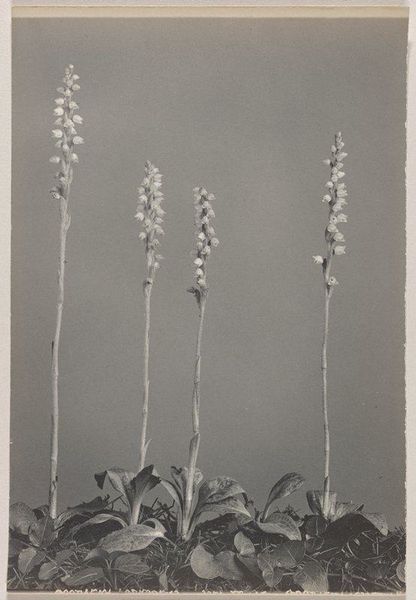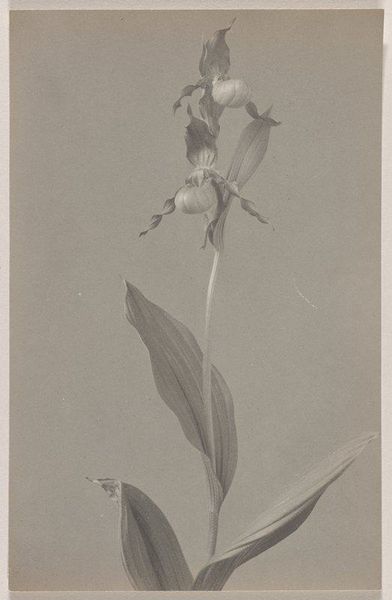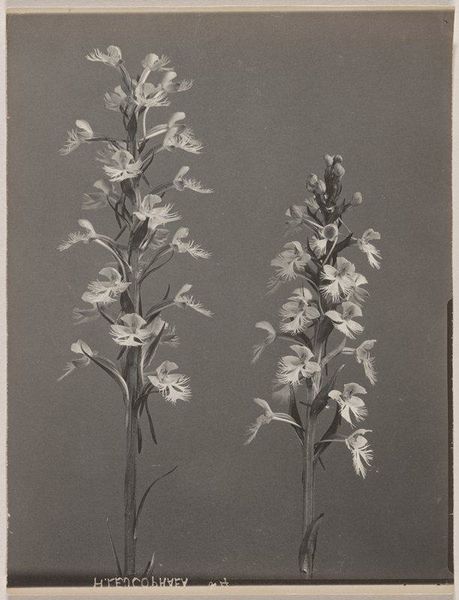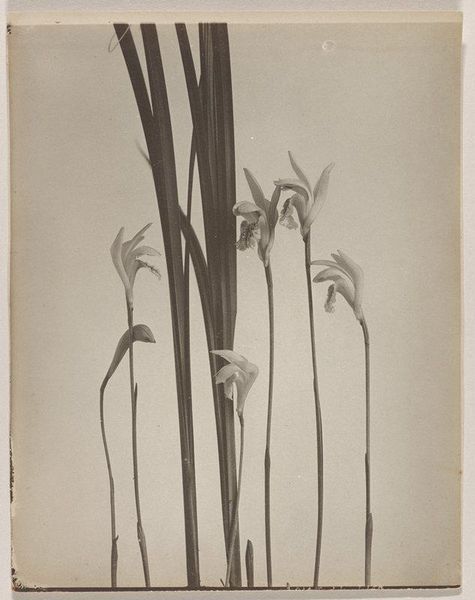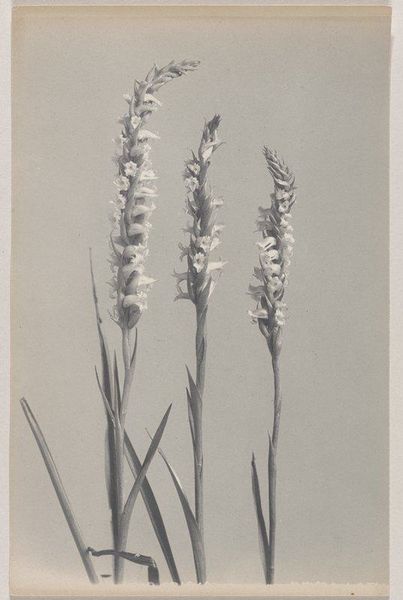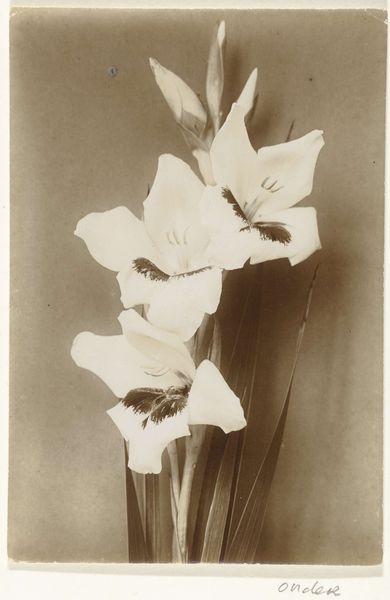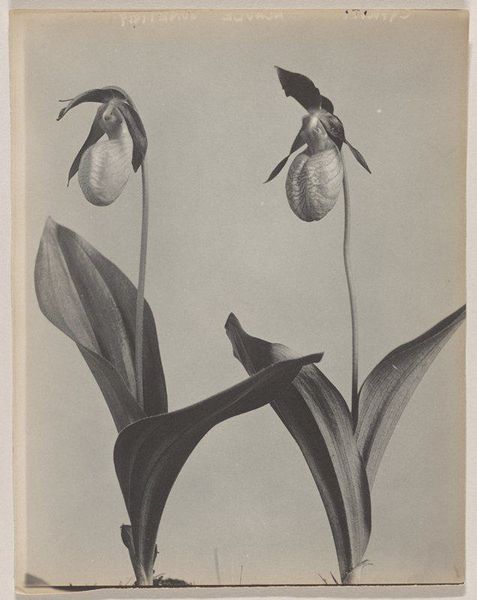
photography, gelatin-silver-print
#
still-life-photography
#
photography
#
gelatin-silver-print
#
united-states
Dimensions: 9 7/16 x 6 1/2 in. (23.97 x 16.51 cm) (image)9 13/16 x 6 1/2 in. (24.92 x 16.51 cm) (sheet)
Copyright: No Copyright - United States
Curator: What a remarkably stark yet delicate image. I'm drawn to the gelatin silver print's almost ghostly monochrome. Editor: I agree. It's somber but precise. It highlights form and texture so well. The stillness almost feels fragile. Curator: Absolutely. This is "Cypripedium arietinum- Ram's Head" by Edwin Hale Lincoln, taken in 1931. Lincoln dedicated himself to documenting native orchids, producing meticulous studies, primarily using photography as his medium. Editor: So, the process becomes inherently linked to the preservation and documentation of nature, a study in contrasting values. What can you tell me about this flower, specifically? Curator: Well, the Ram’s Head orchid is notoriously difficult to cultivate. It thrives in very specific soil conditions. This work makes me wonder about Lincoln's labor-- where he acquired it, whether it was studio grown, the challenges he might have faced to showcase this plant so starkly. Editor: The plant's elusiveness makes me think of its representation here as an act of memorializing a vanishing beauty. How do the socio-economic implications of botanical study and conservation affect its reception in spaces like Mia, our very institution, I wonder? Does enshrining nature change our perception? Curator: That's interesting. The shift from the flower's natural context to the gallery definitely alters its symbolic value. Lincoln sold these photographs to nurseries and botany enthusiasts. We see the commercial forces intertwining with scientific documentation and artistry. Editor: And what about the print as an artifact? Its very survival allows current generations to study the work and reflect on their environment anew, isn’t it fascinating? Curator: It is. It's incredible how Lincoln transformed the plant through a carefully controlled chemical and physical process into something timeless and universally available for the study of materials and botanical practice. Editor: It is powerful to witness how one can engage with conservation from diverse points. Thank you, it gave a lot of food for thought.
Comments
No comments
Be the first to comment and join the conversation on the ultimate creative platform.

